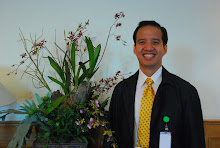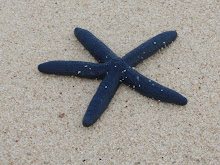A friend recently told me that Cebu Pacific has come up with a novel idea in building a stable of pilots: offer a scholarship. As far as my friend can remember, the airline will offer anywhere between 50-80% coverage of the P3.5 million tuition in exchange for years of service. The only requirement is for 20-20 vision and a certain aptitude for flight mechanics. In just one year, you can be piloting an Airbus. I suddenly remembered my first flying lesson 22 years ago and wonder if this is a new possible professional direction.
I know it was a Friday the thirteenth because when I called my mom soon after getting back to barracks, she told me the significance of the date. My decision not to inform them was deliberate - I didn't want them to talk me out of the session. I just knew it was among those few things I had to do for myself then.
The session started easily enough: "Colonel", the head of the Aviation Dept., sends the service station wagon to pick you up from any point on campus. I believe I said to meet at the Logansport Gate. Colonel was a co-pilot of the B-52D nuclear bomber of the U.S. Strategic Air Command before retiring to teach in Culver. He also loves his tobacco and the whole car reeks of it. I believe I developed my taste for pipe tobacco from those car rides.
The drive was ordinary by any Culver spring: the trees lining the road were shaking off a harsh Midwestern winter by sprouting new leaves to catch the sun while squirrels were out in force gorging after their long sleep. Perfect day with perfect flying weather.
The first thing you see as you drive to the hangars are the gleaming white and maroon planes of the school, arranged wingtip-to-wingtip out on the tarmac.
The Colonel led me into the hangar to start the lesson. We started with the pre-flight briefing. I know I should've read the manual but with AP English, Chemistry, and Grenadiers practice everyday, I just didn't have the time...but also likely, neither the discipline.
He showed me around the aircraft. Up to that point, I have always thought of planes as being this solid metallic wonder: all firm and sleek and complicated. What I saw then came as a shock: I remember telling my mom later on that it as no more than an aluminum and plastic coffin. The forward hatch was open to reveal the engine and I reached out and shook the aluminum panel covering in disbelief. It was so pliable, almost frail.
Boarding the plane was even more surreal: we had to step on the low-slung wings of the Piper. And when you clambered on board, the plane shook, almost groaning at the weight of two men on her.
The cabin was fairly cramped but comfy for four. It was all of plastic forms and glass panels and analog instruments. The plane cross-section is no wider than one and a half arm's length: I remember reaching across the Colonel's line of sight just to get a feel of her dimensions. At this, the Colonel grunted his seeming amusement but said nothing, likely relishing the excitement (and fear?) of a newbie flier.
He talked me through the pre-flight with the manual. When everything checked out, he had me start the engine. The plane shuddered thrice before the engine caught then hummed as the propellers reached their full rpms.
We taxied out of the hangar using the yoke and the foot pedals. We made our way slowly to the single asphalt runway. I guess since we were basically a service and training field, we didn't need to have a control tower so we radioed a tower somewhere east of our location.
After final adjustment of the flaps, Colonel told me to "floor" the engine. The little plane shook with the increased power then slowly started her run down the asphalt. Our speed steadily increased as the grove of pine trees in the horizon came closer. When the needle hit 65 mph, Colonel told me to pull on the yoke. I guess I didn't do it fast enough because he suddenly grabbed the stick and pulled back harder. We missed the tree tops by a mere ten feet, quite close by aviation standards.
We climbed till we hit 1,000 feet, I think, then the Colonel had me level off. We adjusted the pitch for normal flight and pulled up the flaps. Our Pipers have fixed undercarriages so there was no need for wheel retraction.
Indiana is generally flat so at a thousand feet with clear skies, you can see all the way to Chicago. Actually, you will know it is Chicago by the ominous looking nimbus cloud of pollution hanging heavily above it.
The view is spectacular. With the plane optimized for level flight, I can release my tense hold on the yoke and watch the scenery. The ground is neatly laid out like a quilt of soy and wheat squares, Indiana's chief crops. Lake Maxinkuckee lies to my right like a large mirror. The cities of Logansport, South Bend, and Warsaw lay before and around us. I see other planes below us: crop-sprayers, sport planes, and business jets. The contrails of commercial aircraft criss-cross the skies above us.
Colonel teaches me to radio our identity and location to a nearby tower under whose jurisdiction we fly over. We repeat this several times as we cross over different zones of control.
I learn to bank for turns, keeping a certain landmark at my right or left wingtip. I learn slow turns that will allow me to descend slowly while circling an airfield. I learn quick dizzying turns to keep me at my present altitude but flying in the opposite direction. Keeping the nose level with the horizon is a good way of controlling the plane: nose up and we stall, nose down and we speed right up. Diving is quite a thrill -- comes with this screaming sound you hear on WWII movies of Stukas bombing and strafing.
We did a touch and go at another airfield, pretending to abort a landing. Learned that we shouldn't bounce an aircraft if we wanted to keep the undercarriage in one piece and our lunch properly digested.
Just before the hour was up, the Colonel decided to have some fun (at my expense). He had me turn off the engines so we can glide. The sudden quiet was unnerving - then again, seeing the plane as a coffin first then having to fly it unpowered now can be quite frightening. Colonel then had me practice banking while gliding. Altitude loss was far quicker now so corrections had to be made faster. I was white-knuckling all the way.
After we dropped down to something like 500 feet, Colonel had me start her back up. The rumbling sound was really welcome now; the revving like a soothing balm for my nerves. We climbed back up to altitude for even more fun.
Colonel had me feather the engine for level flight then had me watch the ball. He then slowly pulled on the yoke for a slow climb. The engines started shuddering, like running a car on 4th gear in traffic, then the plane suddenly lost power, slowed, then dropped. We were in a controlled stall. The Colonel simply let go the yoke to drop the nose then we built back the speed in a dive. Now that was better than a roller-coaster ride...and without me screaming like a little girl.
My time was up so we lined up for the approach. After radioing our position, we dropped the flaps and adjusted our pitch for landing. The deployed flaps changed our flying profile so much that we lose altitude gradually.
The wind over Maxinkuckee was now blowing across the runway that we had to fight yawing. If you thought handling the yoke was hard, controlling yaw with the foot pedals is a bigger challenge. Nothing in my experience taught me to control moving left to right with my feet alone. So it was a strange experience having to fly with my right wing forward up until fifteen feet above the runway. We then swung the plane back forward then touched down.
Actually, it was more bounced down. I think we went up twenty feet before settling back down hard. Shook me up so much that my teeth chattered. Since you always land with power up, you had to push down on the yoke to keep the nose down. The Colonel then feathered the engine while I applied the nose brake gently so as not to blow the tire. He had me taxi back to the line up. The Colonel was very charitable in his assessment: most newbies flub their landings and that with a bit more practice, I will nail a three-point landing eventually.
We did the post-flight check-up before unbuckling from the seats. We clambered out of the cabin and off the wing. I patted the plane as a way of thanking it for getting me back safely before walking over to the station wagon.
I was shaking when I got in the front seat. I was chilled by the wind and my sweaty undershirt. The temp had dropped considerably when the cabin doors were opened - two large men generate a lot of heat in a small enclosed space. I just pulled my jacket tighter around me. The Colonel thankfully turned the heater on low for the drive back.
I flew for another seven hours after that. It was getting expensive so I stopped before getting to fly my first solo. I still haven't gotten over my love of planes and of flying -- it's good that my work involves some air travel at least twice a year. And I still have getting my pilot's license in my list of life to-do's.
Sunday, December 30, 2007
Subscribe to:
Post Comments (Atom)


No comments:
Post a Comment